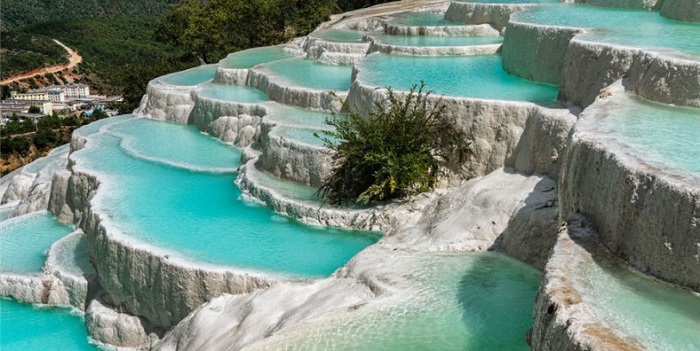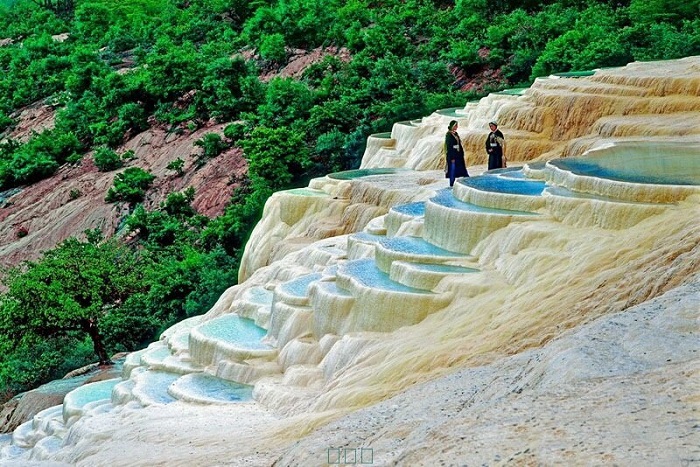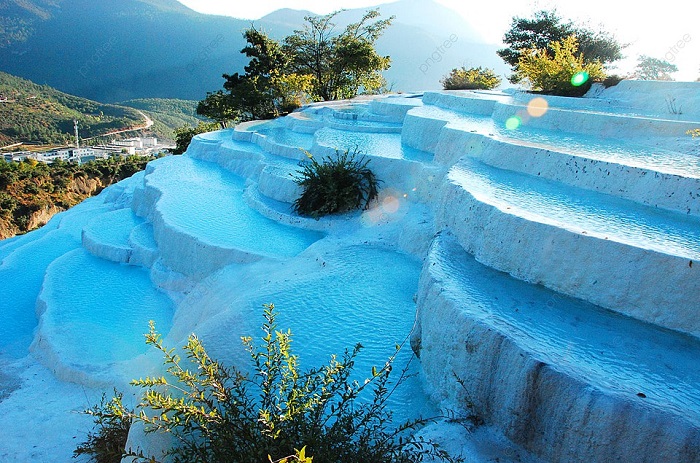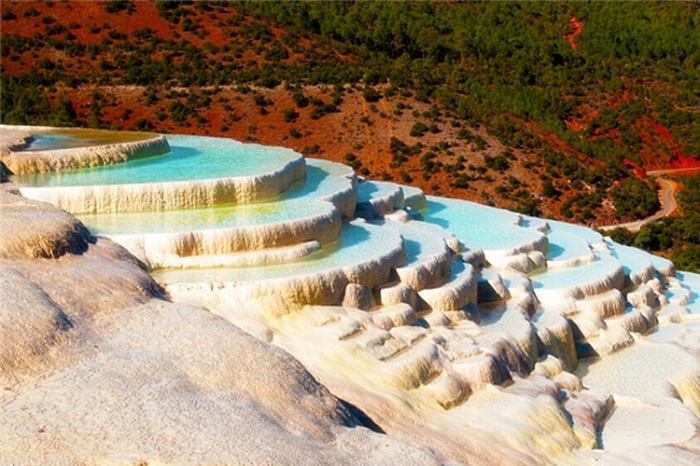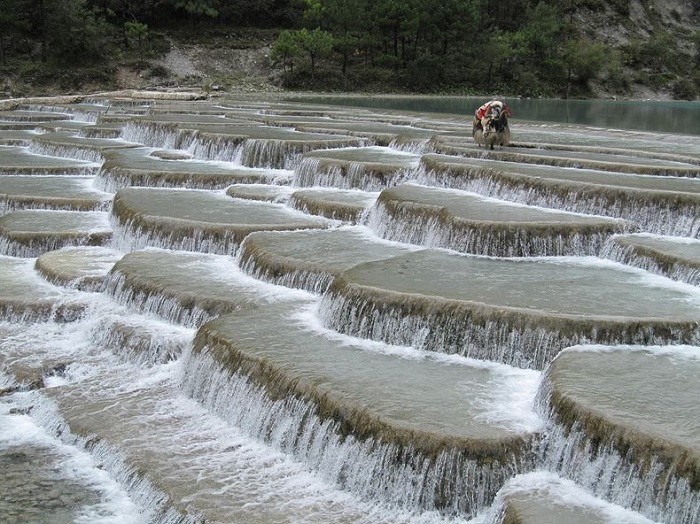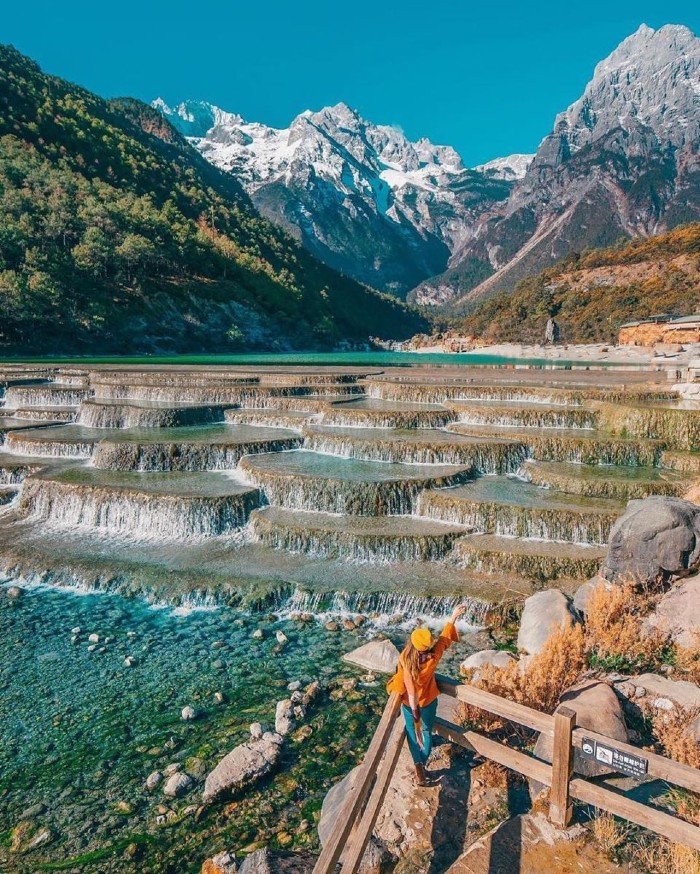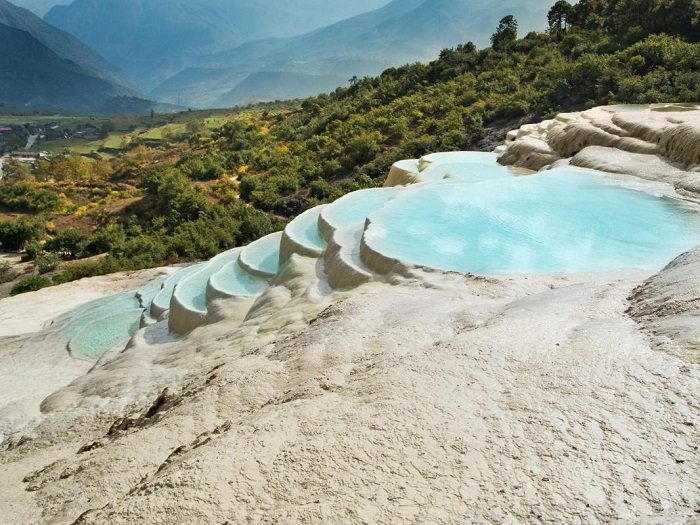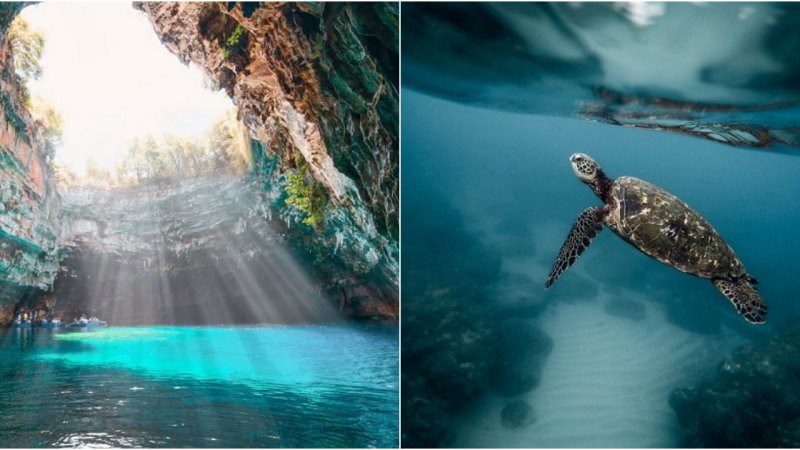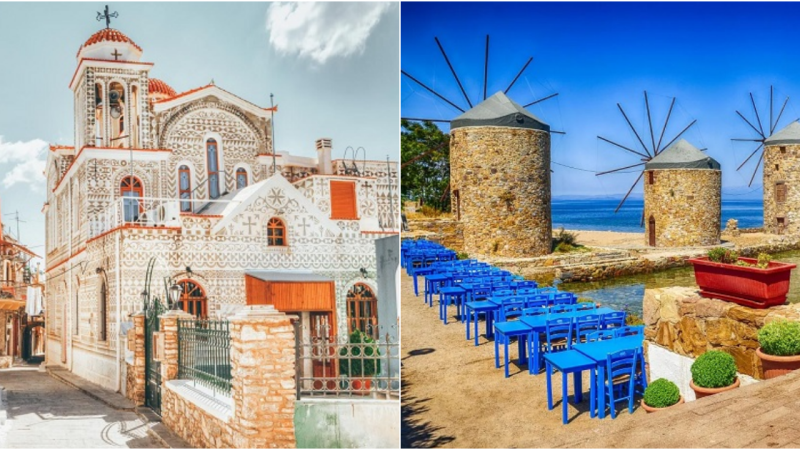Baishuitai: Exploring the Enchanting Beauty of China’s White Water Terrace
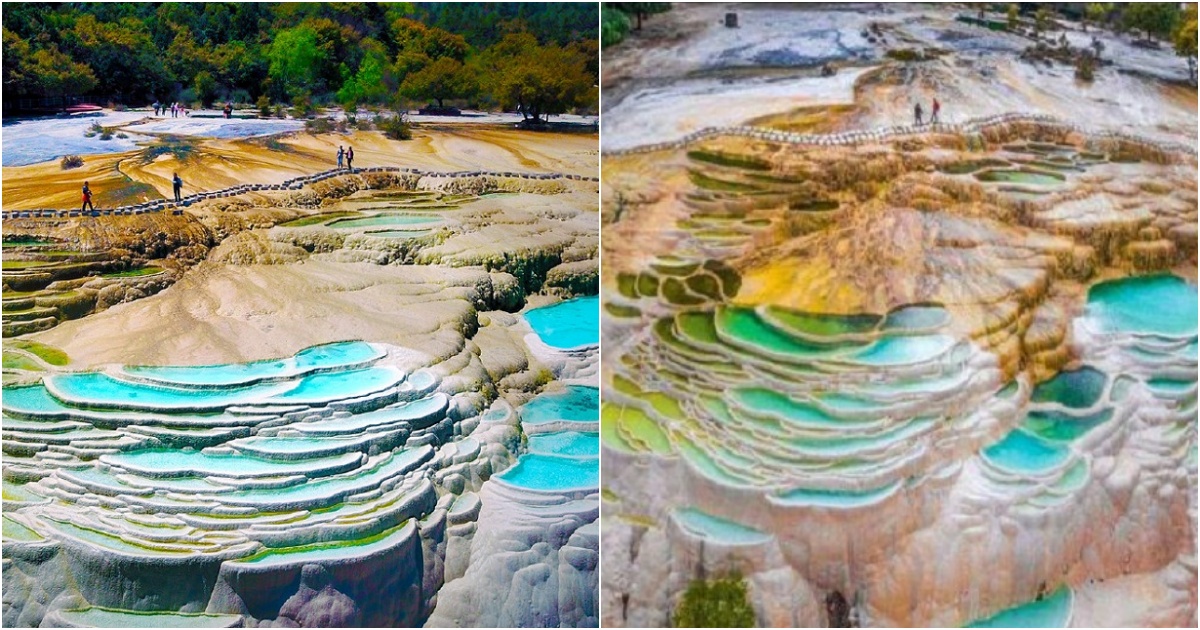
Introduction: Baishuitai, also known as the White Water Terrace or the White Terrace Fields, captivates travelers with its ethereal charm amidst the mountainous landscapes of Yunnan, China. Resembling the renowned Cotton Castle in Pamukkale, Turkey, this flawless replica invites visitors to immerse themselves in its surreal and picturesque allure.

Body: Baishuitai, nestled in the ancient terrains of China with a history spanning hundreds of thousands of years, covers an expansive area of 3 square kilometers. Situated at an elevation of 2,380 meters in the village of Baidi, Sanba town, southeast of the city, this marvel is renowned for its vast mineral deposit. The cascading terraces, formed by rich calcium-laden water flowing down from mountain springs, create a breathtaking spectacle akin to a crescent-shaped cascade of white limestone.
The best time to visit Baishuitai is during the spring (February to April) and autumn (September to November) seasons, offering the most stunning landscapes and pleasant weather. In winter, although the water flow may be reduced, it still creates a mesmerizing atmosphere, especially in the morning when the sun shines upon the glistening ice formations.
To reach Baishuitai, travelers can take a bus from Shangri-La Bus Station, departing twice daily at 9 AM and 2 PM. Alternatively, the Lijiang-Shangri-La Railway provides another transportation option, although it is currently under construction. Those seeking a more comprehensive itinerary can opt for long-distance buses passing through Shangri-La, Côn Minh, Đại Lý, Lijiang, offering flexibility and ticket prices ranging from 25 to 55 CNY per person.
Marveling at Baishuitai’s landscape, visitors can explore three distinct sections within the white terraced fields. The first section resembles an artificial dam with flowing layers of water, creating a serene descent. The second section features interconnected pools with varying depths, while the final section showcases scallop-shaped formations formed by layered sediments.
Adjacent to the Baishuitai grassland, visitors will discover a pond and a moon-shaped water pavilion, believed to be a place where celestial maidens adorn themselves. Below the terrace, a protrusion resembling a pregnant woman serves as a sacred site where the local Naxi people worship the deity of fertility.
During spring, Baishuitai in China mesmerizes visitors with its vibrant shades of green. In autumn, the surrounding mountains become a canvas adorned with a profusion of colorful flowers and foliage, creating a breathtaking scene.
Moreover, a visit to Baishuitai offers a unique opportunity to delve into the rich Dongba culture, including traditional crafts such as papermaking and ink production, cherished as invaluable treasures by the Naxi people. Each year, on the 8th day of the second lunar month, locals gather at Baishuitai to celebrate a traditional festival featuring singing, dancing, and various cultural activities that continue throughout the day and night.
Conclusion: Baishuitai, China’s White Water Terrace, presents travelers with an enchanting and otherworldly experience. With its captivating landscapes resembling a sculpted masterpiece, this natural wonder beckons visitors to immerse themselves in its ethereal beauty. Whether exploring the cascading terraces or delving into the unique Dongba culture, Baishuitai offers an unforgettable journey into one of China’s most captivating destinations.
